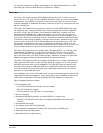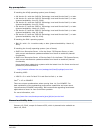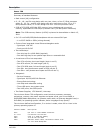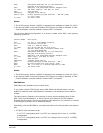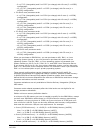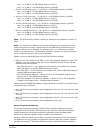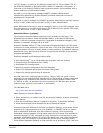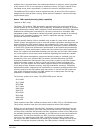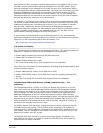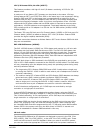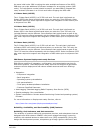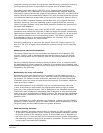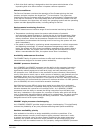
IBM United States Hardware Announcement
110-009
IBM is a registered trademark of International Business Machines Corporation
9
try out the Shared Processor Pool. With its intuitive browser-based interface, IVM is
easy to use and helps reduce the time and effort required to manage virtual devices,
processors, and partitions. An HMC is not required.
Notes:
• PowerVM 2.1.2.11 with Fix Pack 22.1 and Service Pack 1, or later, and a supported
AIX or Linux operating system level are minimum requirements for performing
Live Partition Mobility functions on POWER7. Refer to the Software requirements
section for more information on minimum AIX and Linux OS levels.
• Active Memory Sharing is planned to be supported with the availability of SLES 11
SP1.
Customers can upgrade from PowerVM Express to either PowerVM Standard or
PowerVM Enterprise, or they can upgrade from PowerVM Standard to PowerVM
Enterprise.
By upgrading to PowerVM Standard or PowerVM Enterprise, users gain the ability
to create up to 160 logical partitions on the Power System 750. Users also gain
the ability to manage their PowerVM enabled machine with either an HMC or the
Integrated Virtualization Manager.
By upgrading to PowerVM Enterprise, users can leverage Live Partition Mobility and
Active Memory Sharing.
Active Memory Expansion (optional)
Active Memory Expansion is an innovative POWER7 technology that allows the
effective maximum memory capacity to be much larger than the true physical
memory maximum. Sophisticated compression/decompression of memory
content can allow memory expansion up to 100%. This can allow a partition to do
significantly more work or support more users with the same physical amount of
memory. Similarly, it can allow a server to run more partitions and do more work for
the same physical amount of memory.
Active Memory Expansion is available for partitions running AIX 6.1, or later.
Technology Level 4 with SP2 is needed.
Active Memory Expansion uses CPU resource to compress/decompress the memory
contents. The trade-off of memory capacity for processor cycles can be an excellent
choice, but the degree of expansion varies, depending on how compressible the
memory content is, and it also depends on having adequate spare CPU capacity
available for this compression/decompression. Tests in IBM laboratories using
sample workloads showed excellent results for many workloads in terms of memory
expansion per additional CPU utilized. Other test workloads had more modest
results.
Clients have a great deal of control over Active Memory Expansion usage. Each
individual AIX partition can turn on or turn off Active Memory Expansion. Control
parameters set the amount of expansion desired in each partition to help control the
amount of CPU used by the Active Memory Expansion function. An IPL is required
for the specific partition that is turning memory expansion on or off. Once turned on,
there are monitoring capabilities in standard AIX performance tools such as lparstat,
vmstat, topas, and svmon.
A planning tool is included with AIX 6.1 TL4, allowing you to sample actual
workloads and estimate both how expandable the partition's memory is and how
much CPU resource is needed. Any Power Systems model can run the planning tool.
In addition, a one-time, 60-day trial of Active Memory Expansion is available to
provide more exact memory expansion and CPU measurements. The trial can be
requested using the Capacity on Demand Web page
http://www.ibm.com/systems/power/hardware/cod/
Active Memory Expansion is enabled by a chargeable hardware feature (#4792),
which can be ordered with the initial order of the server or as an MES order. A




